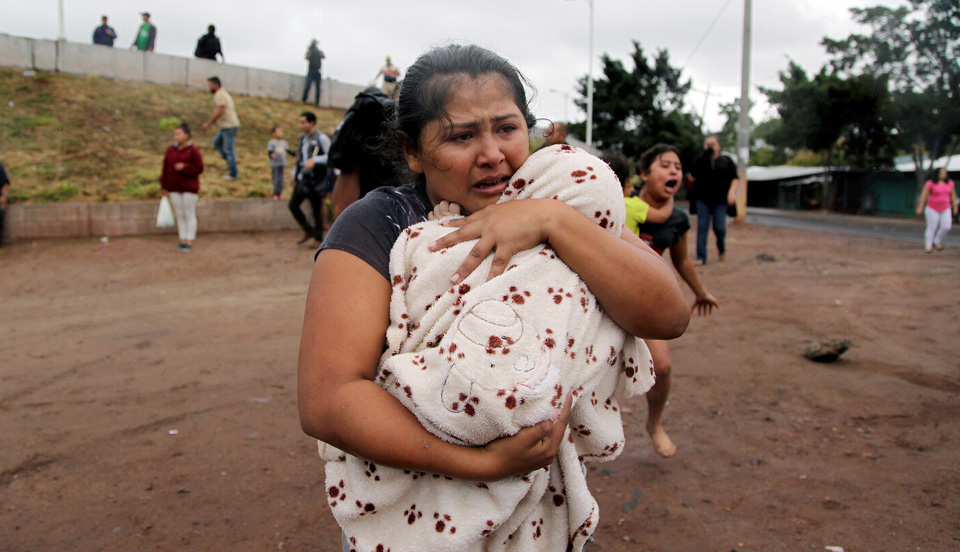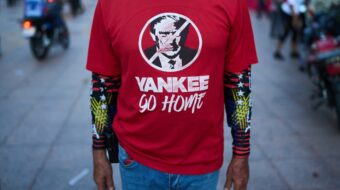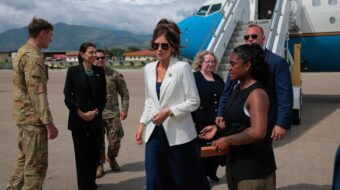
The Central American republic of Honduras continues to be roiled by controversy and protest more than three weeks after a general election which took place on November 26.
On Sunday December 17, the Supreme Electoral Tribunal, or TSE, the official body in charge of carrying out elections and counting the vote, finally declared incumbent president Juan Orlando Hernández to be the winner in the presidential race. The previous Friday, Salvador Nasralla, the candidate of the center-left Opposition Alliance Against the [Hernández] Dictatorship , formally challenged the validity of the vote.
The opposition is unsatisfied with claims by the TSE that it has carried out a recount of a limited number of ballots about which there had been controversy, and had found that Hernández was still ahead. The TSE gave Hernández 42.95 percent of the vote, to Nasralla’s 41.38 percent, with the third-place Liberal Party Candidate, Luis Zelaya, getting 14.73 percent.
Honduras does not have runoff elections, so even though Hernández fell well short of a majority, and the Alliance and the Liberals between them got 56.11 percent, Hernández is declared the winner.
The opposition now is demanding that the election be redone completely. In this, they are supported by the Liberal Party and many mass organizations.
Strange to relate, the observer mission of the Organization of American States (OAS), agreed with Nasralla on this, and also called for new elections. (This was indignantly rejected by Hernández as an infringement of Honduras’ sovereignty). The position taken by the OAS is eyebrow-raising because the left in Latin America has for a long time seen the OAS as a tool of both U.S. imperialism and the political right.
The position taken by OAS Secretary General Luis Almagro suggests that the problems with the election were so serious that even he felt he could not endorse its integrity. The European Union observer mission declined to state whether they saw the election as valid or not and declined to call for a new election.
Some of the irregularities that various witnesses, including a team of observers from the United States who reported on what they saw in detail, saw on November 26 and subsequently:
– Ballot materials mysteriously showing up in unauthorized places.
– Unauthorized persons, including operatives of Hernández’ National Party, entering the polling places and acting in an intimidating manner.
– Ballot tally sheets that had not been properly witnessed and signed.
– Small political parties selling poll watcher credentials to supporters of Hernández’ National Party.
– Polling places closing up to an hour earlier than scheduled.
– At the outset, a large discrepancy between the TSE’s announcement on the evening of November 26 that 57 percent of the vote had been counted, and opposition poll observers’ claim that actually 70 percent had been counted. As at that point Nasralla was shown to be ahead in the vote count, this was a suspicious difference.
– Not once but three times, the TSE’s “servers went down,” and when they came up again, Hernández had jumped into the lead.
– The head of the TSE, David Matamoros, is basically a National Party functionary, so his stewardship of the elections and the vote count is suspect from the outset.
These are problems of the actual administration of the elections and the vote count. But the wider circumstances in which the election was carried out also point to trouble. These include years of violence against sectors opposed to the 2009 coup which overthrew former president Manuel Zelaya, with journalists, youth, women, social activists, LGTBQ people, and minority activists being murdered with impunity. In addition, the mere fact that Hernández was running for re-election at all is a violation of the Honduran constitution, which prohibits re-election. Massive corruption and links between the Hernández government and the drug trade complete the messy picture.
Since suspicions arose that the elections were being stolen, there have been massive demonstrations in the capital, Tegucigalpa, and other Honduran cities. These have included street barricades, a one-day general strike, and other tactics. Efforts of the Hernández government to suppress the protests have evidently failed, though at least seventeen demonstrators have been killed by state security forces, including three small children who are said to have died due to tear gas inhalation.
All evidence is that the Trump administration will continue to support the Hernández regime, because of U.S. economic interests in the region, and also because of fears that a new government might threaten the presence of the large U.S. military base at Soto Cano, near Comayagua. On Monday, the U.S. State Department issued a statement which clearly endorses the TSE’s decision as legitimate. This was blasted by former President Manuel Zelaya, overthrown in a U.S.-supported coup in June 2009, who now heads the leftist LIBRE party, the largest group in the Opposition Alliance Against the Dictatorship, Nasralla’s electoral vehicle.
Nasralla himself, meanwhile, headed to Washington Monday to meet with U.S. officials and ask them not to recognize Hernández’s second term.
Meanwhile in Honduras, Juan Orlando Hernández’s sister and key political ally, Hilda Hernández, was killed in a helicopter crash on Saturday, December 16. Five other people in the craft also died. In the context of the also very questionable elections of 2013, money was diverted from the Social Security Institute, which provides health care to the poor, to Juan Manuel Hernández’ first presidential campaign at a time when Hilda Hernández was heavily involved in National Party funding operations.










